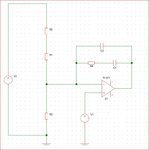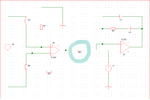txbob
Junior Member level 2

Most of the application notes on Compensation of error amp only talk about restive divider network used for scaling feedback voltage. When differential amplifiers (or single ended amplifiers) are used we need to add a resistor in between Output of the first stage amplifier and inverting pin of the error amplifier (please correct me if I am wrong). Can anyone help me how will we calculate the value of that resistor (R6 in the attached picture)
http://www.irf.com/product-info/datasheets/data/ir3447m.pdf
http://www.irf.com/product-info/datasheets/data/ir3447m.pdf




